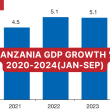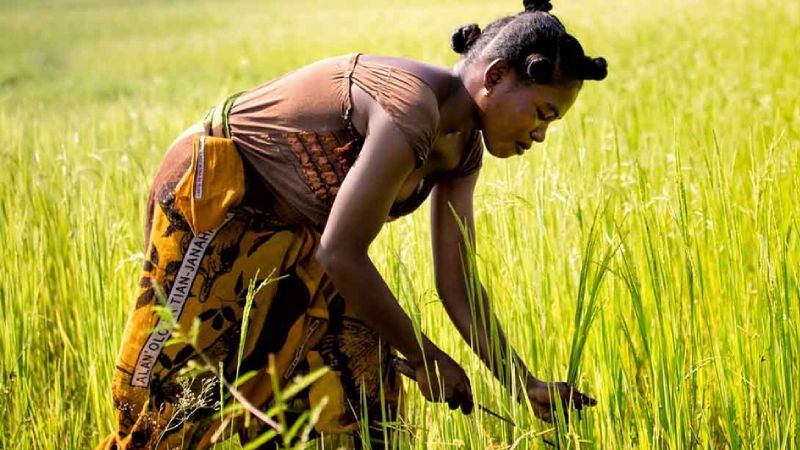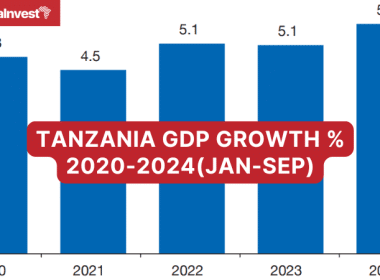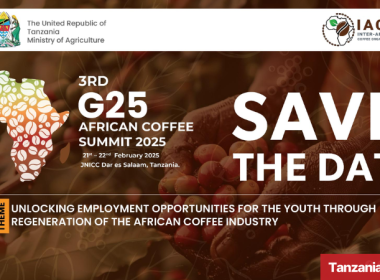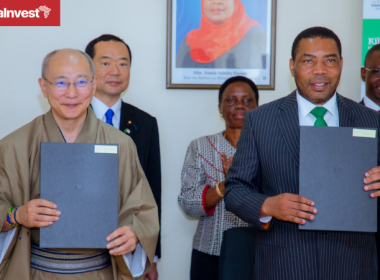Agriculture
Agriculture plays a crucial role in the Tanzanian economy and is the source of food, nutrition, income and employment for the majority, especially rural populations.
Moreover, agriculture is the source of food and industrial raw materials and contributes significantly to foreign exchange earnings
In 2020, the agriculture sector in Mainland Tanzania contributed about 26.9% of the total GDP and grew at an annual rate of 4.9%.
Agriculture comprises crops, livestock, forestry and fisheries subsectors.
In terms of sub-sector contribution to the GDP, crop production contribution was 15.4%, livestock 7.1%, forestry 2.7% and fisheries 1.7%.
Regarding annual growth, in 2020 the subsectors grew as follows: crops (5.0%), livestock (5.0%), forestry (3.2%) and fisheries (6.7%).
In Zanzibar, the agriculture sector contributed 22.8% to the total GDP and grew at 3.3% in 2020.
Likewise, the agricultural sector in Zanzibar contributed as follows: crops (8.8%), livestock (7.9%), forestry (1.2%) and fisheries (4.9%) of the GDP and the annual growth was 1.3%, 8.2%, 4.4% and 3.5%, respectively.
Agricultural land in Tanzania was last measured in 2016 and amounts to 44 million ha which represents 45% of the country’s total land area versus 30.5% in 1967 (0.79% average annual growth rate).
Tanzania Crops
Tanzania’s crop production decreased by 3% in the past 5 years, from 10.3 million tonnes in 2014/15 to 9.9 million tonnes in 2018/19.
Food crop production reached 9.3 million tonnes in 2018/19, compared to 9.7 million tonnes in 2014/15 (-4%). Maize is the most produced food crop in Tanzania accounting for 62.6%, followed by rice (21.6%), pulses (15.1%), and wheat (0.7%).
Cash crop production reached 0.639 million tonnes in 2018/19, compared to 0.627 million tonnes in 2014/15, marking an increase of 2%. Cashew nuts are the most produced cash crop in Tanzania accounting for 35.2% of the production, followed by seed cotton (34.9%), coffee (10.4%), tobacco (8.6%), tea (5.8%), and sisal (5%).
Crop exports accounted for USD 830 million (9%) of the total value of Tanzania’s exports in 2019, compared to USD 793 million in 2015, representing an increase of 5%.
Raw tobacco and cashew nuts are Tanzania’s most exported cash crops. The top export destinations of Tanzanian tobacco are Germany, Russia, and Poland, while almost 80% of cashews are exported to India. Most of the production of cashew nuts in Tanzania is exported without being shelled.
Tanzania Livestock
Tanzania’s livestock production generated USD 4.2 billion in 2018, compared to USD 2.4 billion in 2014, representing an increase of 75%.
Out of the total meat production, 55% (USD 2.31 billion) comes from cattle, 21% (USD 0.88 billion) from sheep and goats, 14% (USD 0.59 billion) from pigs, and only 10% (USD 0.42 billion) from chicken.
In 2015, Tanzania’s Ministry of Livestock and Fisheries Development launched the Tanzania Livestock Modernization Initiative (TLMI), which aims to transform the traditional livestock sub-sector into a modern, responsive, sustainable and environmentally-friendly engine for rural development.
Tanzania Aquaculture
Tanzania’s fishing industry generated USD 0.27 billion in 2018 versus USD 0.21 billion in 2014, marking an increase of 26%.
Aquaculture in Tanzania is dominated by freshwater fish farming in which small-scale farmers practice both extensive and semi-intensive fish farming.
Small fish ponds of an average size of 10 m x 15 mm (150 m2) are integrated with other agricultural activities such as gardening and animal and bird production on small pieces of land.
Tanzania is currently estimated to have a total of 14,100 freshwater fishponds scattered across the mainland.
Tanzania Agriculture Value-Addition
The Tanzanian agriculture value-added net output increased by 46% during the period 2012–2017, from USD 10.5 billion to USD 15.3 billion.
Currently, value-added products in Tanzania include cotton yarn, manufactured coffee and tobacco, sisal products (yarn and twine), wheat flour, biscuits and pasta, beer, textiles, rolled steel, refined sugar, etc.
Tanzania produces an average of 300,000 tonnes of sugar per year while demand stands at about 670,000 tonnes, of which 77% is for domestic consumption and 23% is for industrial use.
In April 2020, The Tanzania Investment Centre (TIC) issued a notice inviting domestic and foreign investors to develop sugarcane and sugar processing plantations due to a sugar demand gap in the country.
In line with the 2025 Vision of the Ministry of Agriculture, Food and Cooperatives of Tanzania, there should be at least two new products developed from each of the staple crops, horticultural crops, livestock and fisheries by that year.
Southern Agricultural Growth Corridor of Tanzania (SAGCOT)
In 2010 the SAGCOT, an agricultural partnership designed to improve agricultural productivity, food security and livelihoods in Tanzania, was initiated.
During March 2016, the WB approved a USD 70m SAGCOT Investment Project to support the agricultural sector of Tanzania and strengthen it by linking smallholder farmers to agribusiness for boosting incomes and job-led growth.
Tanzania Agriculture Development Bank (TADB)
In 2015 the TADB was established by the government of Tanzania to assist in implementing its policies and strategies relating to the agricultural sector.
The TADB is dedicated to contributing significantly to the development of agriculture in Tanzania through mobilizing financial resources and supporting smallholder farmers with low-interest loans.
Last Update: 7th September 2020



